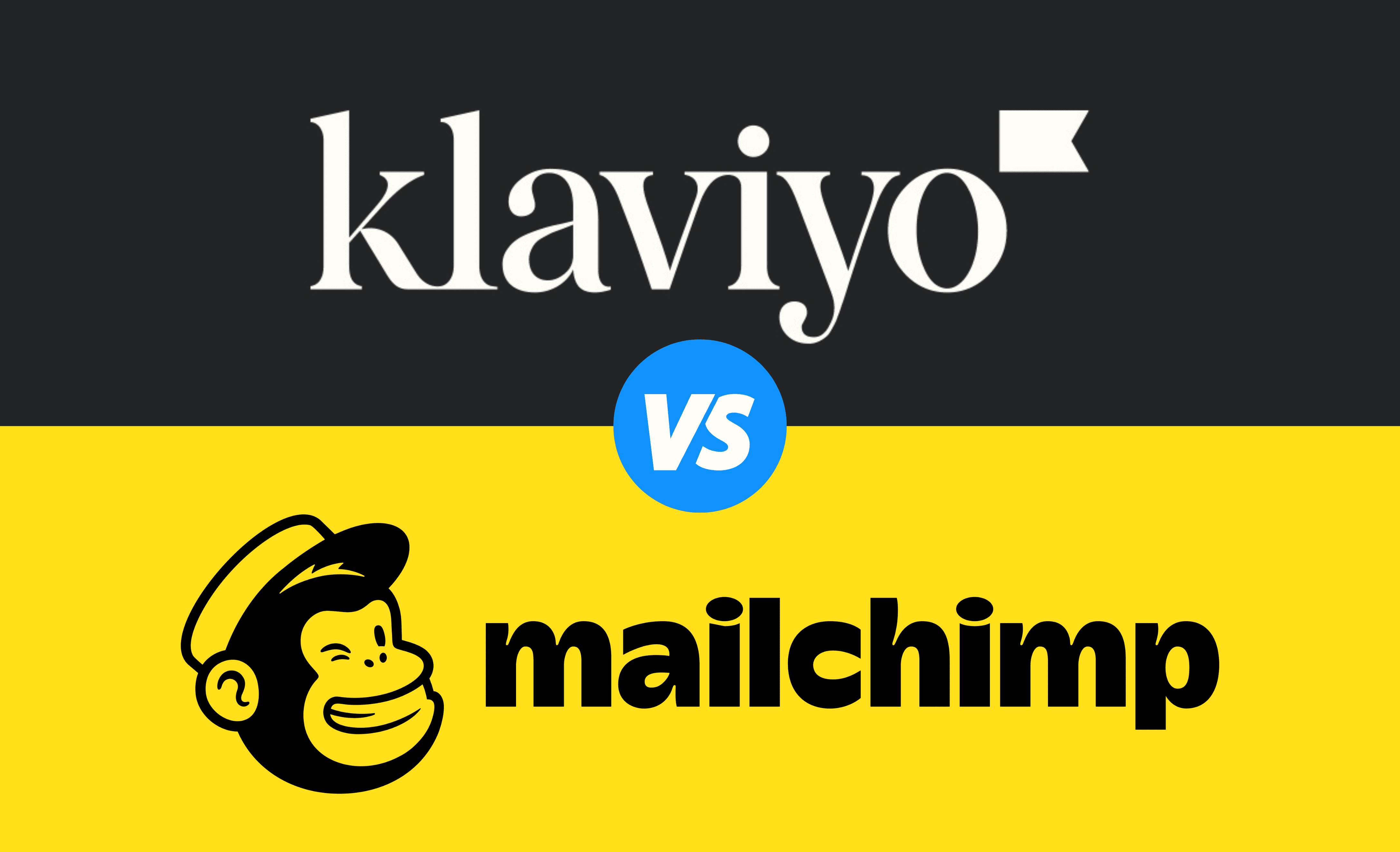Email marketing is essential to any business, but deciding which email marketing platform to use can be difficult. Klaviyo and Mailchimp are two of the most popular platforms, but which one is better for your business?
This blog post will compare Klaviyo and Mailchimp to determine which platform is better for you. We will look at features, pricing, ease of use, and more to help you make the best decision for your business.
The two leading email service providers (ESPs)
According to a Litmus report, email marketing delivers an ROI of $36 for each dollar spent, which is greater than any other medium. This is why email marketing is essential for any business.
Email marketing platforms make sending mass emails to your customers easy, but choosing the right platform can be difficult. There are many factors to consider, such as features, pricing, ease of use, and more.
Klaviyo and Mailchimp are two of the most popular email marketing platforms, but which one is better for your business?
Klaviyo
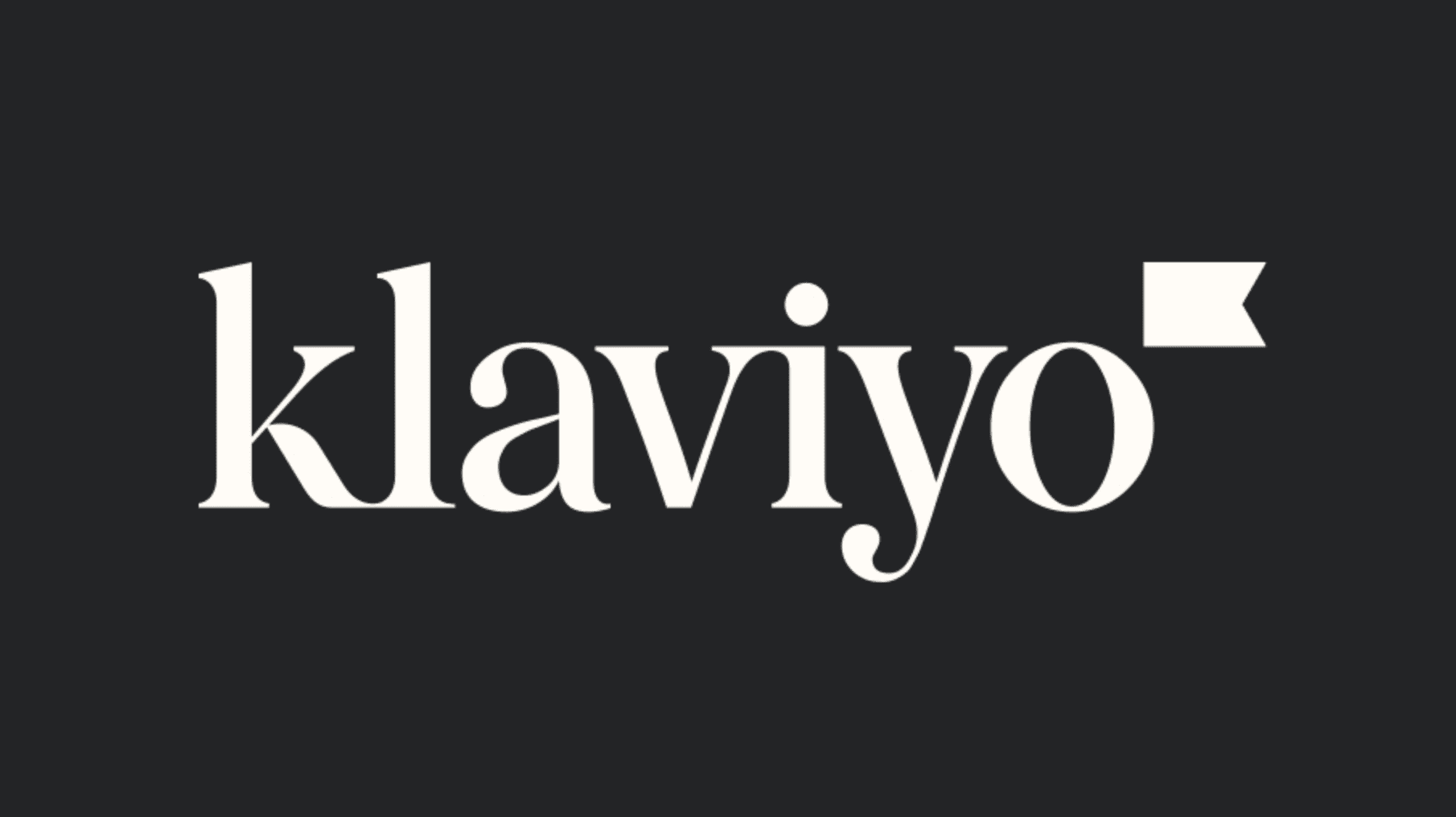
Klaviyo is a relative newcomer to the email marketing scene. Founded in 2012, Klaviyo has quickly become one of the leading ESPs. Klaviyo focuses on helping businesses use data to personalize their email marketing campaigns.
Klaviyo can segment customers and create highly personalized email campaigns by integrating with eCommerce platforms and other data sources. In addition, Klaviyo’s reporting and analytics tools help businesses track the ROI of their email marketing campaigns.
The platform also includes a wide range of features to improve deliverability, including inbox preview and A/B testing. Overall, Klaviyo is a powerful tool for businesses that want to optimize their email marketing efforts.
Klaviyo also integrates with many popular eCommerce platforms, making it easy to get started with email marketing if you’re already using one.
MailChimp
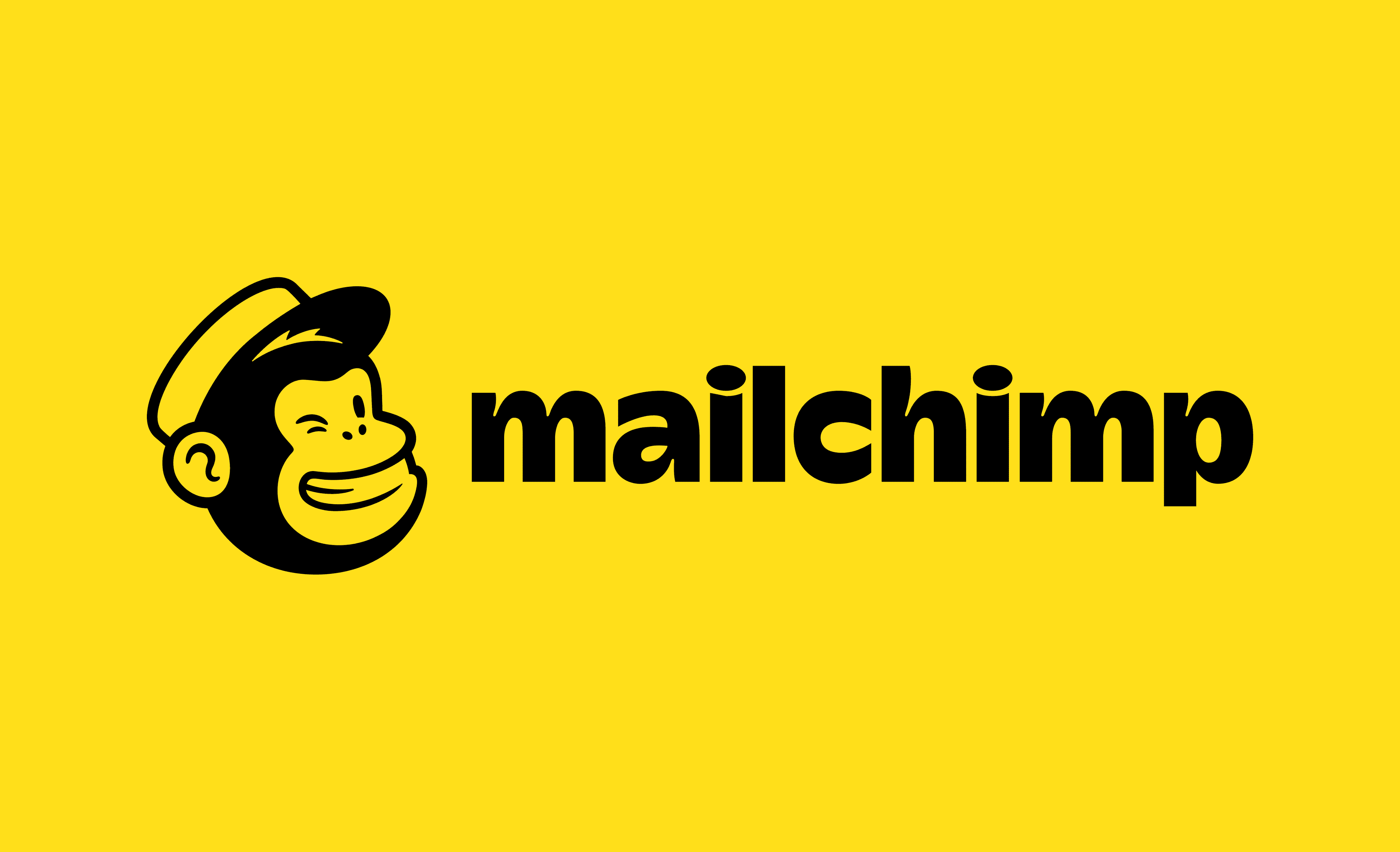
MailChimp is one of the most popular ESPs, with over 14 million users. One of the most versatile and user-friendly platforms available, MailChimp allows businesses of all sizes to create and send professional-looking emails.
In addition to its basic email marketing features, MailChimp also provides users with powerful email marketing tools for segmenting their contact lists, creating automated email campaigns, and tracking the performance of their emails.
And because MailChimp integrates with a wide variety of other software applications, it can be used to support various marketing initiatives. As a result, it’s no wonder that MailChimp is one of the most popular email service providers on the market today.
The platform also includes customizable templates, drag-and-drop editors, and sophisticated marketing automation tools. MailChimp also offers powerful reporting and analytics to track the performance of your email campaigns.
Like Klaviyo, MailChimp integrates with many popular eCommerce platforms to make it easy to get started with email marketing.
Pricing
Klaviyo
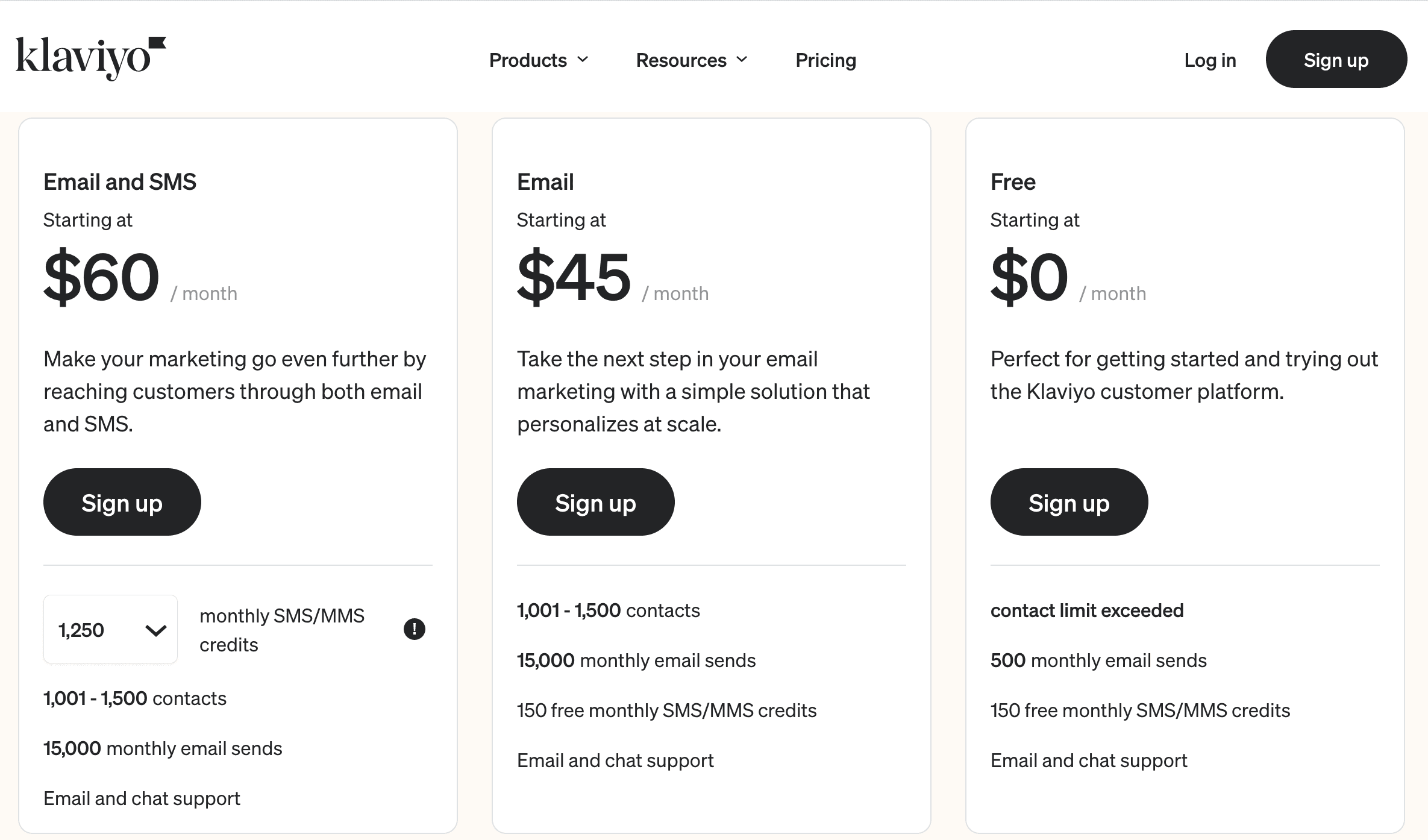
Klaviyo has a tiered pricing structure based on the number of contacts in your database. The first tier is free for up to 250 contacts. The next tier is $20 per month for up to 1000 contacts.
The third tier is $45 per month for up to 1,500 contacts. And the fourth tier is $60 per month for up to 2,500 contacts. The price goes up steadily in this fashion, with the highest tier being $1,700 per month for 150,000 contacts. You will have to contact sales for a custom quote if you have more than 150,000 contacts.
MailChimp
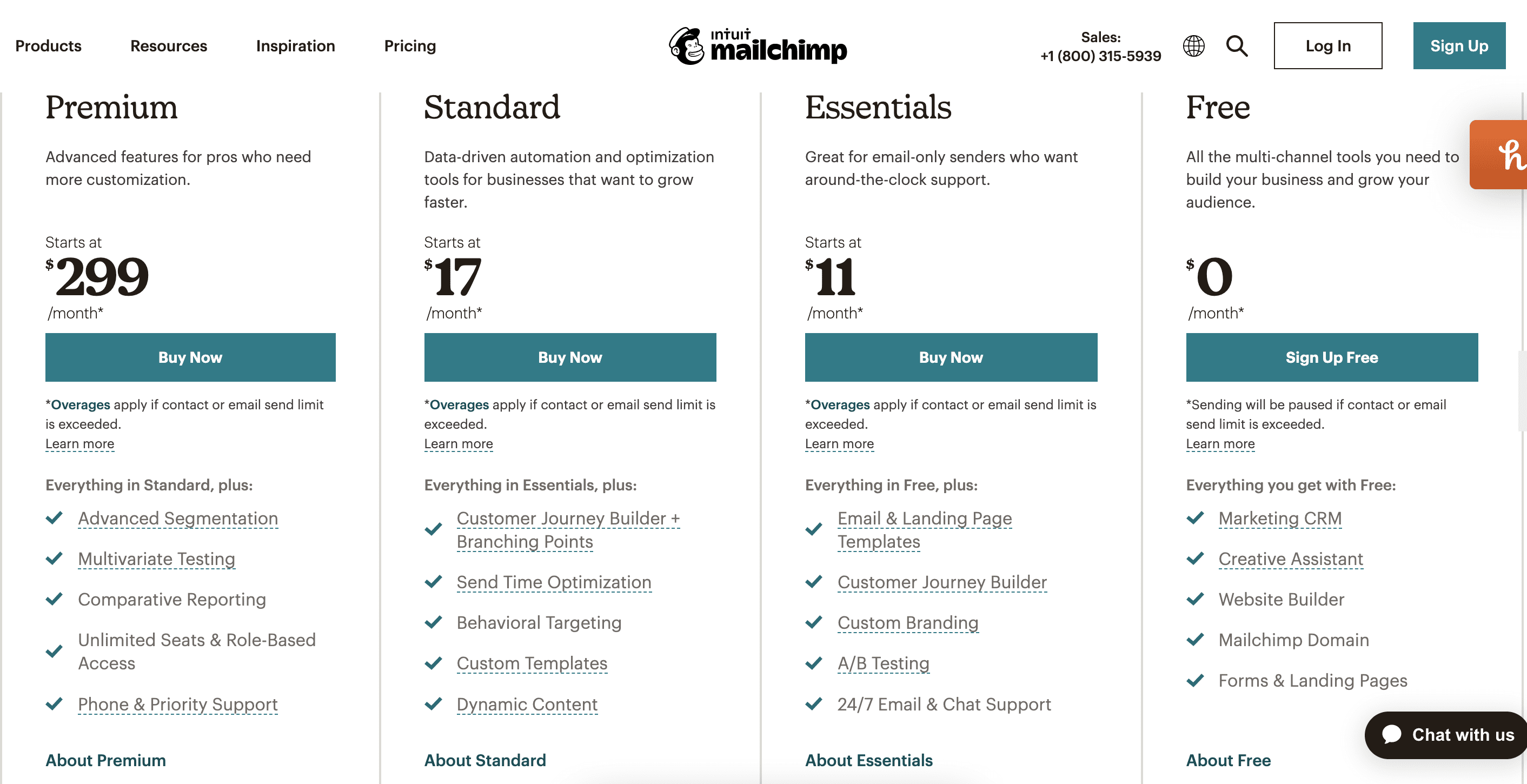
MailChimp also has a tiered pricing structure based on the number of contacts in your database. The free plan allows up to 2,000 customer contacts with a monthly email send limit of 10,000.
The first paid plan starts at $9.99 per month for up to 50,000 contacts and 500k emails. The next tier is $14.99 per month for up to 100,000 contacts and 1.2 million emails. The third and final tier is $299 per month for more than 100,000 contacts and unlimited seats.
However, it is to be noted that these are preselected plans and you can make your custom plans based on the number of contacts you have. You can get a custom quote by choosing the number of contacts and the level of service (Premium, Standard and Essential).
If you have a substantial need, you may speak with their sales team to create a unique plan.
The difference
As you can see, MailChimp is cheaper than Klaviyo at every level. The price difference is mainly because Klaviyo offers more premium features than Mailchimp.
Klaviyo also offers features that Mailchimp does not in its initial plans, such as comparative reporting and Multivariate testing. Klaviyo is a more powerful tool but comes at a higher price tag.
Email Editor
Klaviyo

Klaviyo’s email editor is one of the most user-friendly editors compared to most other ESPs. The editor is based on a drag-and-drop interface, making it easy to create beautiful emails without any HTML experience.
The editor includes a wide range of templates and themes that can be customized to match your brand. It has custom signup forms and popups and built-in tools for segmenting your contact lists.
MailChimp

MailChimp’s email editor is also based on a drag-and-drop interface. Its built-in photo editor makes it easy to add images and videos to your emails. However, the editor is not as user-friendly as Klaviyo’s.
Mailchimp also offers A/B testing for subject lines and send times and advanced reporting on open rates, click-through rates, and unsubscribe rates.
The difference
When it comes to email editors, Klaviyo is the winner. The editor is more user-friendly and includes a broader range of features than MailChimp’s editor.
Klaviyo’s email editor is more user-friendly and customizable than MailChimp’s. Mailchimp, however, has a better selection of high-quality stock images.
Integrations
Klaviyo
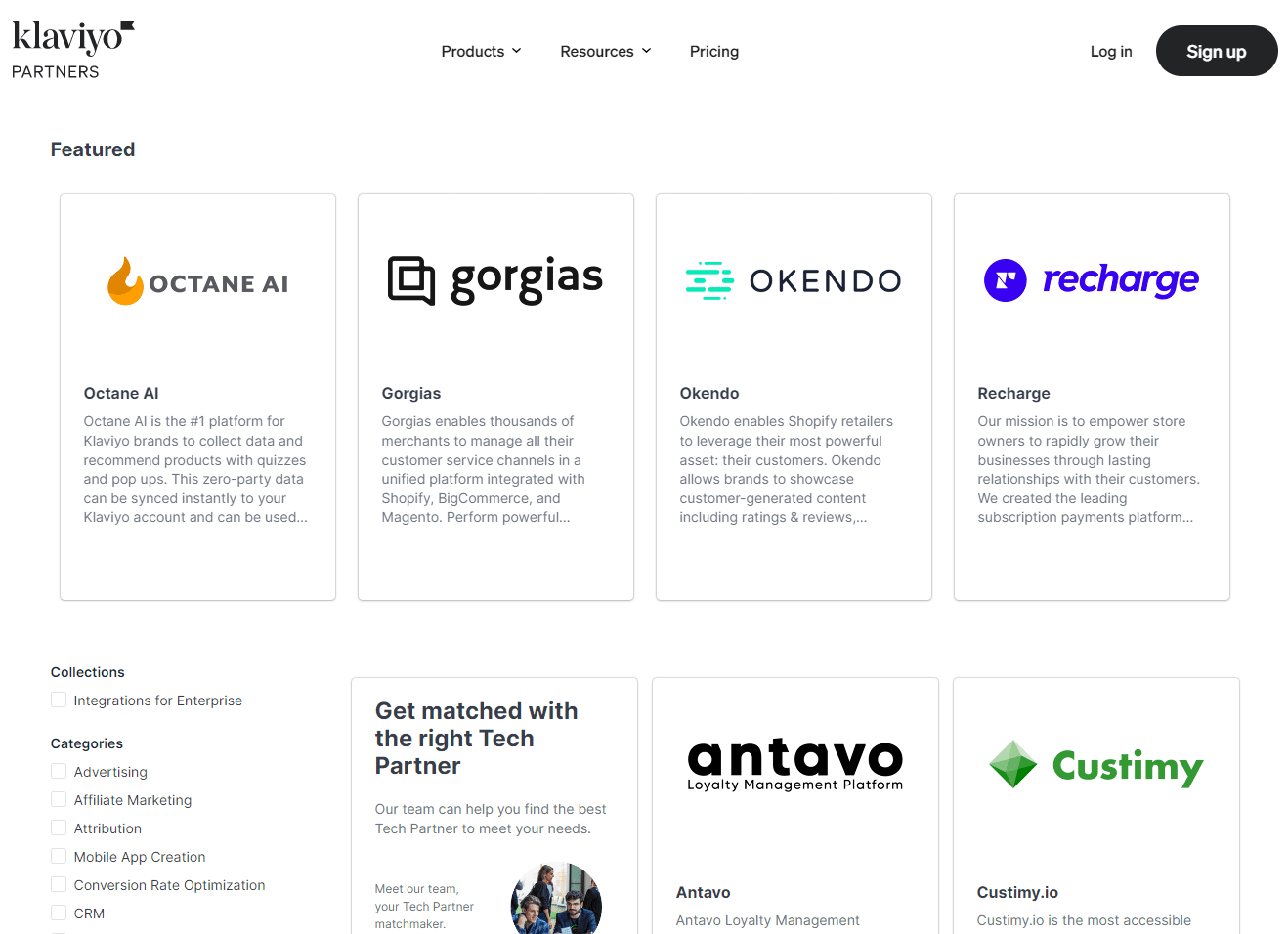
Klaviyo integrates with all major eCommerce platforms and a wide range of other business tools. This makes it easy to get started with email marketing and allows you to automate your marketing processes. Klaviyo has around 200 integrations, more than most email marketing platforms.
MailChimp
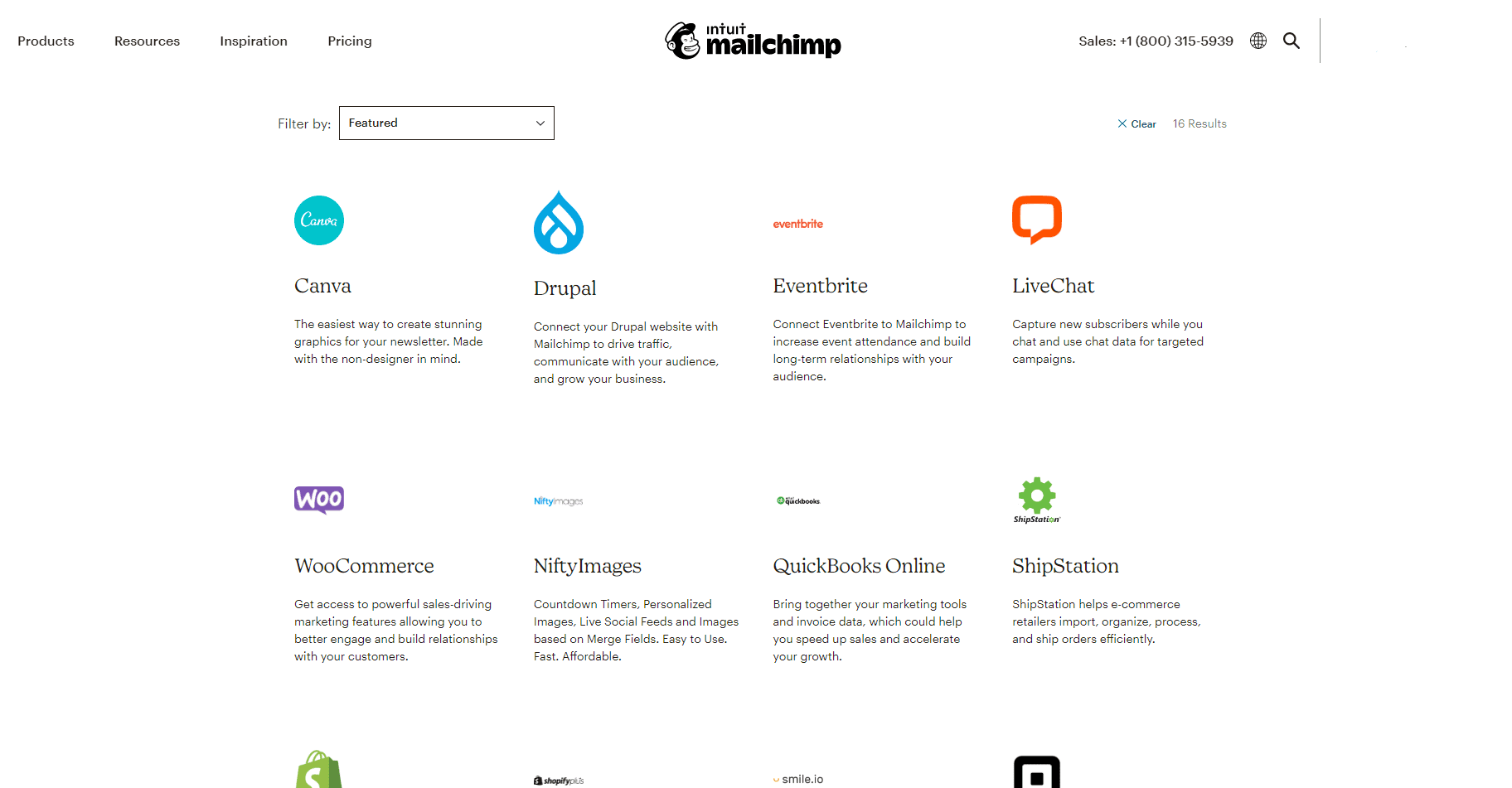
MailChimp has around 289 integrations, which is more than Klaviyo. MailChimp also integrates with all major eCommerce platforms and several other business tools. However, there is one downside for MailChimp: it has disabled Shopify integration for new accounts.
The difference
When it comes to integrations, MailChimp is the ahead. MailChimp has more integrations than Klaviyo, which means it is more likely to integrate with the tools you are already using. However, for Shopify integration, Klaviyo is the better choice.
Deliverability
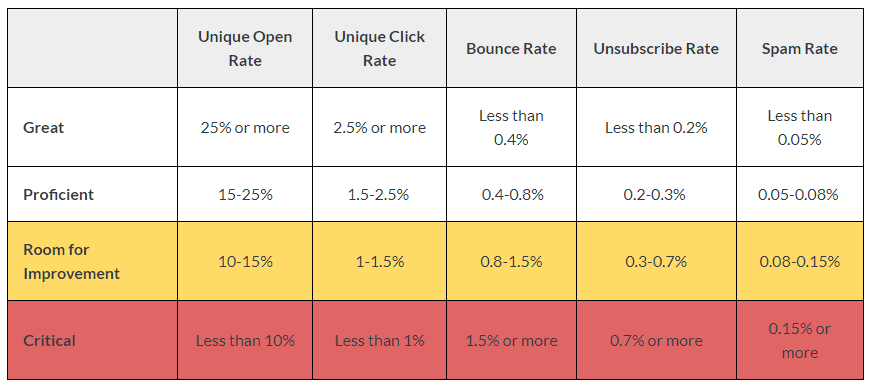
Klaviyo
Even though the exact percentage is unknown, Klaviyo does boast a high deliverability rate. Klaviyo also has many features that help improve deliverability, such as automated IP Warmup and Email Authentication.
During warmup, you can turn ON high engagement flows designed to get contacts engaging with your Klaviyo account as quickly as possible. This will help new IPs to build a good reputation and improve deliverability.
Using their Import tool, you can also migrate your engagement data from your previous provider. This, coupled with excellent monitoring reports, means you can ensure that your emails are delivered to the inbox.
MailChimp
MailChimp’s deliverability rate is also high, at 72.43%, and offers several features like setting up email domain authentication and using dedicated IPs to improve deliverability.
Importing your list is also made easy with MailChimp. You can import contacts from a spreadsheet or connect your CRM to Mailchimp.
Mailchimp has also, to some degree, protected its reputation by not allowing adult and affiliate content, according to Joe Uhl (VP – Operations at MailChimp).
Customers can also get a good delivery rate even by using shared IPs. These IPs, over the years, have been used to send billions of emails and have developed a good reputation.
The difference
When it comes to deliverability, both Klaviyo and MailChimp are equally good. Both platforms have a high deliverability rate and offer features to help ensure your emails are delivered to the inbox. However, MailChimp can be given a slight advantage simply because of its experience in the industry.
Automation
Klaviyo
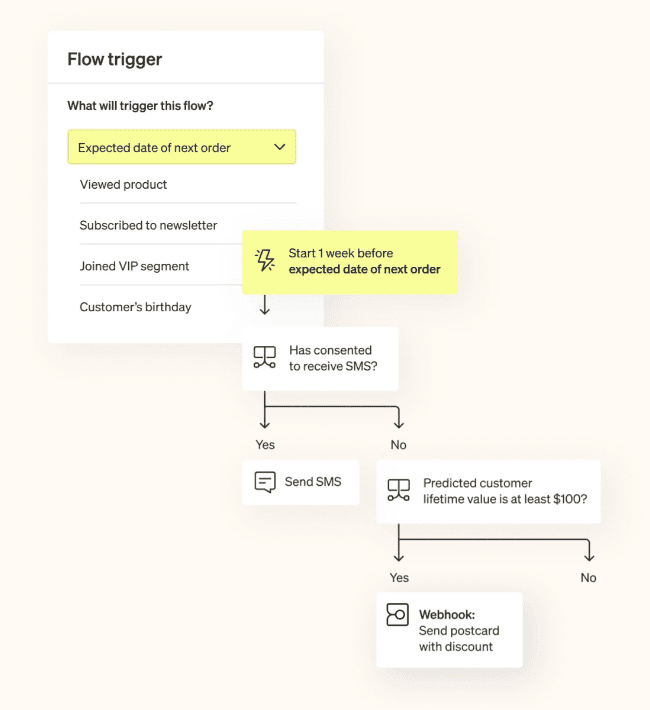
Klaviyo offers a wide range of automation features to help you save time and increase sales. The platform includes tools for abandoned cart recovery, product recommendations, customer segmentation, and more.
Klaviyo also has features like welcome series, abandoned cart emails, order confirmation emails, and product recommendation emails. It also comes with several pre-built workflows that make it easy to start email marketing.
Klaviyo also offers a powerful API that allows you to connect the platform with other email marketing software applications.
MailChimp
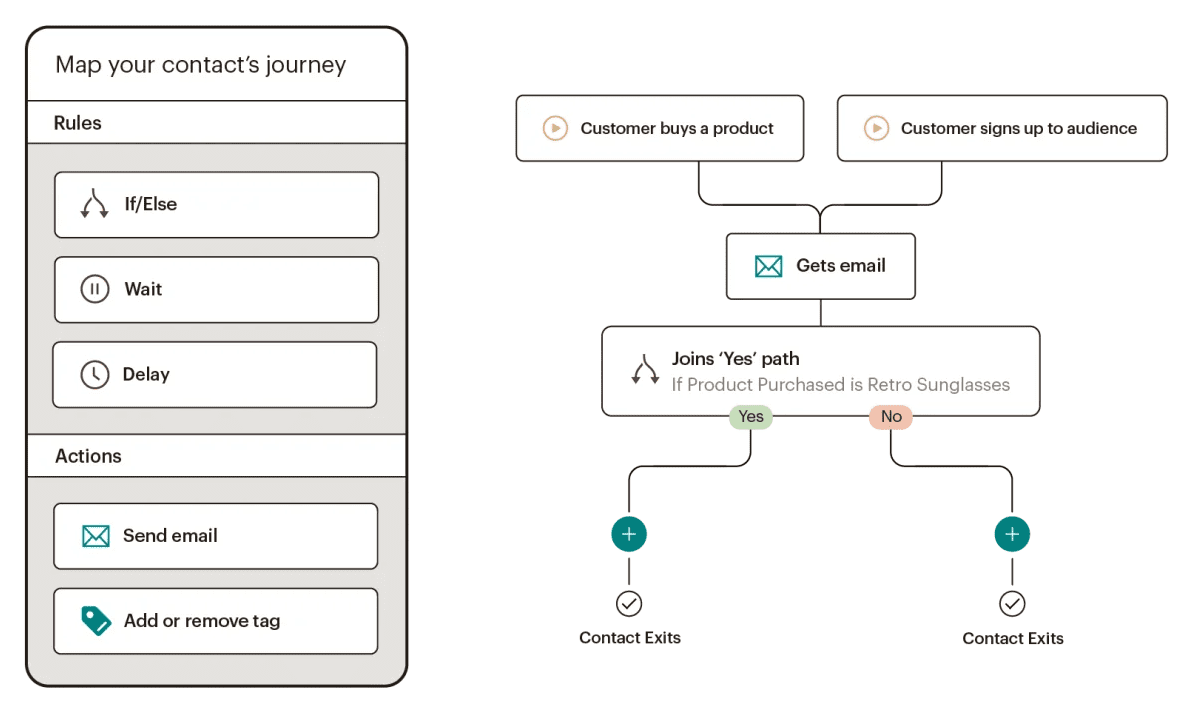
MailChimp allows you to create personalized workflows for your customers on the automation front. For example, it will enable you to modify purchase paths, send targeted content, etc. Scheduling email campaigns is also a breeze with MailChimp.
The platform also makes it easy to create and send automated emails, such as welcome emails, order confirmation emails, and shipping notifications. You can also use MailChimp’s powerful API to connect the platform with other software applications.
The difference
When it comes to automation, both Klaviyo and MailChimp are almost equal. Both platforms offer a wide range of automation features and pre-built workflows.
However, Klaviyo’s automation features are more robust and customizable than MailChimp’s. However, MailChimp’s API is still adequate for most users.
Segmentation
Klaviyo
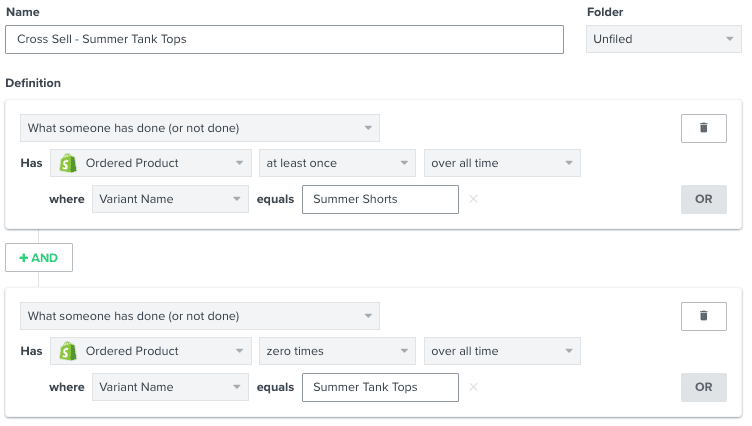
Klaviyo offers a wide range of advanced segmentation features that allow you to target your customers with laser precision. The platform includes tools for customer profiling, behavior-based segmentation, and more.
The advanced option includes cross-selling segmentation that analyzes customer behavior and purchase history to find products that complement what they have already bought.
The item and brand-specific segments allow you to target customers looking for a specific product or brand.
Klaviyo also has an inbuilt algorithm that predicts customers’ gender. This comes in handy when you want to send targeted content and offers.
MailChimp
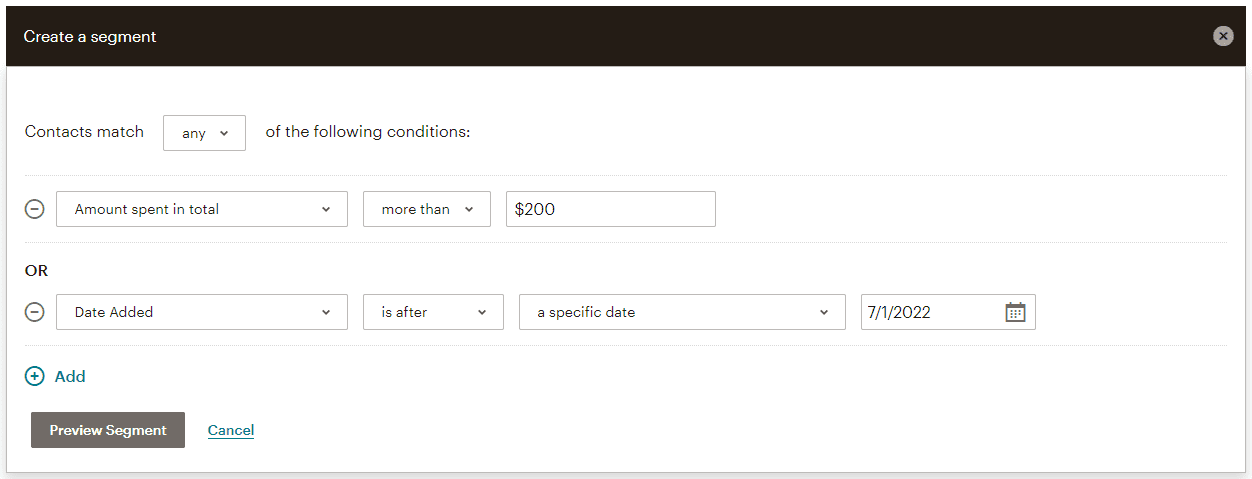
You can combine Mailchimp’s targeting capabilities with audience and contact information to segment contacts. The analytical capabilities of MailChimp are second to none, allowing you to segment contact lists based on hundreds of criteria.
Sending personalized content helps you move customers down your sales funnel and increase conversions. Personalized content is deemed very or somewhat appealing by more than 90% of consumers in the United States.
With MailChimp, you can create custom segments based on how your subscribers interact with your brand. For example, you can create a segment for people who have clicked on a specific link in your emails.
You may also use the Choose Signup Source option to divide your subscribers into various categories based on how they were originally added to your audience. Only the sources you used to build your audience will be shown.
The difference
When it comes to segmentation, Klaviyo has more advanced features than MailChimp. On the other hand, MailChimp has a wide variety of options when it comes to segmenting your audience.
For in-depth analysis, Klaviyo is the better platform. However, MailChimp is the better option if you want to quickly create segments based on how your subscribers interact with your brand.
Reporting
Klaviyo
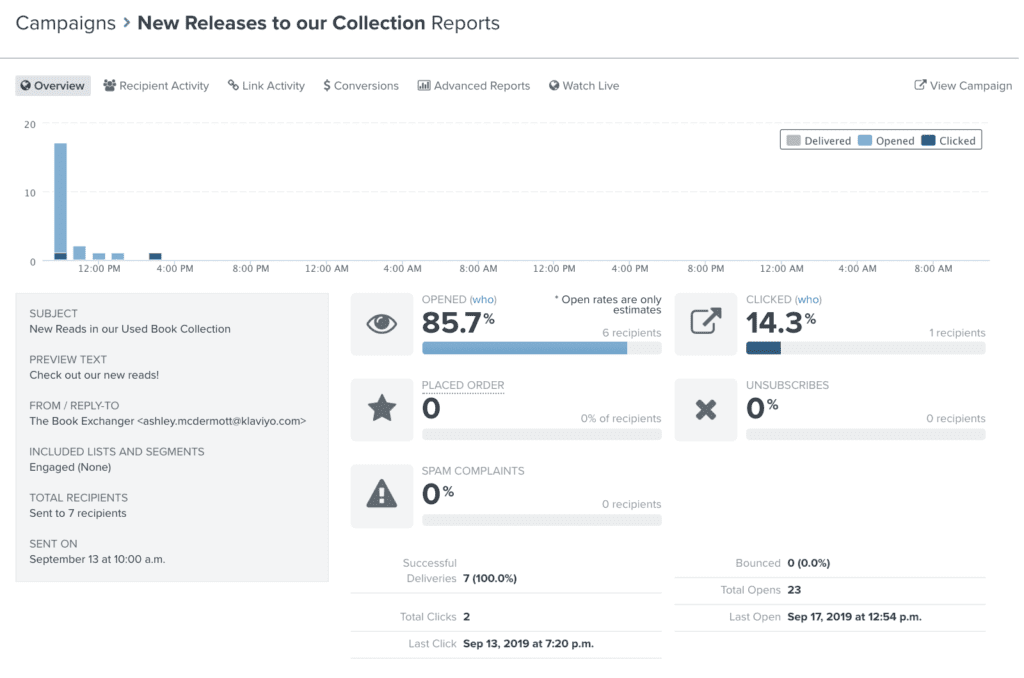
Klaviyo’s reporting and eCommerce analytics provide merchants with comprehensive insights into the success of their campaigns.
Klaviyo’s reporting tools are essential for anyone looking to get the most out of their email marketing campaigns. Klaviyo’s reporting can take your eCommerce business to the next level, whether you’re just getting started or you’re a seasoned pro.
The platform provides a suite of reporting tools that give businesses insight into their marketing performance. Dashboards provide an overview of key metrics, while flow analytics allow businesses to drill down into the details of individual campaign performance.
Conversion tracking provides data on which campaigns drive results, enabling businesses to optimize their marketing efforts for maximum ROI.
MailChimp
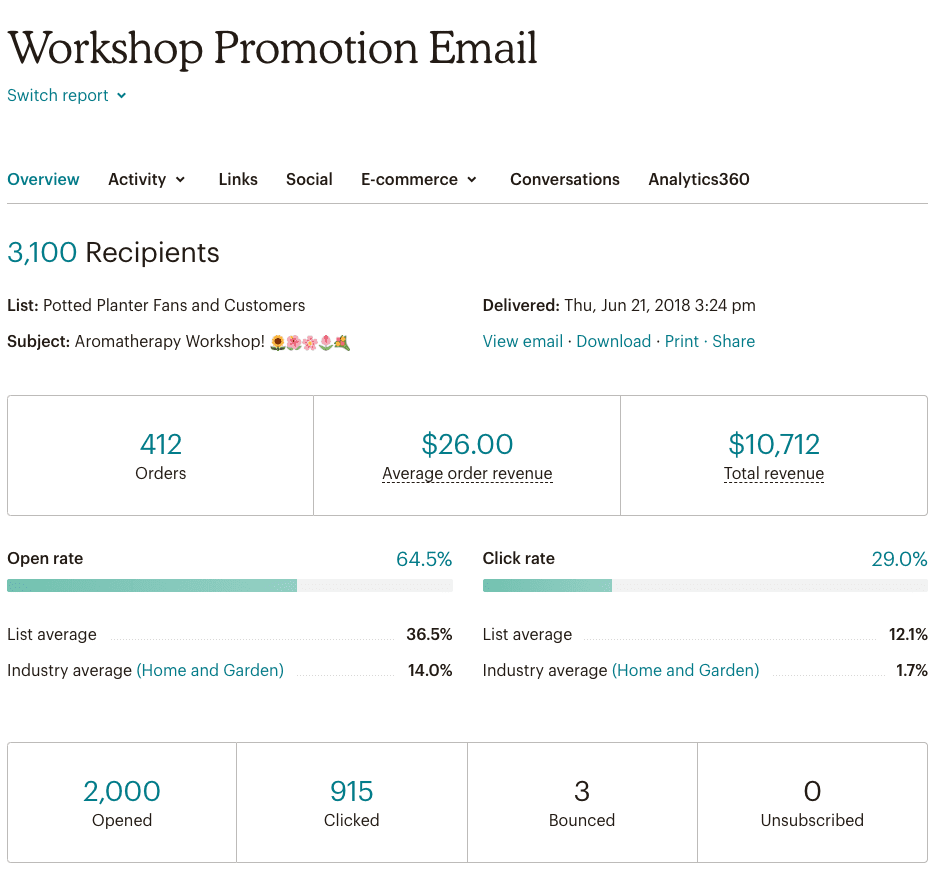
MailChimp offers a variety of reports to help you track your email campaign performance, automation activity, ad campaigns, and landing pages. Email campaign reports show you how many people opened and clicked your email and whether or not they unsubscribed.
Automation reports let you see which actions were triggered by your automated emails and how many people completed each action. Ad reports show you the click-through rate and conversion rate for your MailChimp ads to see how effective they are at driving traffic to your website.
Landing page reports show how many people visited your landing page and whether or not they converted. All of these reports can be found in the MailChimp reporting section of your account.
The difference
Both platforms are pretty similar in what they offer as far as reporting goes. The main difference is that Klaviyo’s reporting is geared more towards eCommerce businesses, while MailChimp’s reporting covers a wider range of email marketing activities.
Klaviyo’s eCommerce analytics are especially useful for businesses looking to optimize their campaigns for maximum ROI. The platform’s conversion tracking enables companies to track which campaigns are driving results and adjust accordingly.
MailChimp’s automation reports are a great way to see which actions were triggered by your automated emails and how many people completed each action. This can help you understand the effectiveness of your automated email campaigns.
Database

Klaviyo
Klaviyo’s database comprises customer profiles, which contain information about each customer. This information includes purchase history, email engagement data, and more.
Klaviyo uses this information to segment customers and creates targeted campaigns. Segmentation is a powerful tool that can improve the relevance and effectiveness of your marketing.
The platform also provides a suite of tools for managing customer data. These tools include the ability to import and export data, create custom fields, and set up automated tasks.
MailChimp
MailChimp’s database comprises subscribers, which are people who have signed up to receive your email communications. Subscribers can be added to your database manually or through a signup form on your website.
Once a subscriber is in your database, you can segment them into groups based on their interests, demographics, or behavior. MailChimp has a list of audiences. Audiences are simply the lists of contacts that you send your email campaigns to.
You can have multiple audiences in your Mailchimp account and segment and target your audiences in various ways to ensure that your message is always relevant.
One good way to segment your database is by creating groups in your audience. Groups are a way of organizing your contacts so you can send more targeted email communications.
The difference
Klaviyo’s database is geared more towards eCommerce businesses, while Mailchimp’s database covers many email marketing activities. Klaviyo’s customer profiles are especially useful for businesses looking to segment their customers and create targeted campaigns.
Predictive analytics
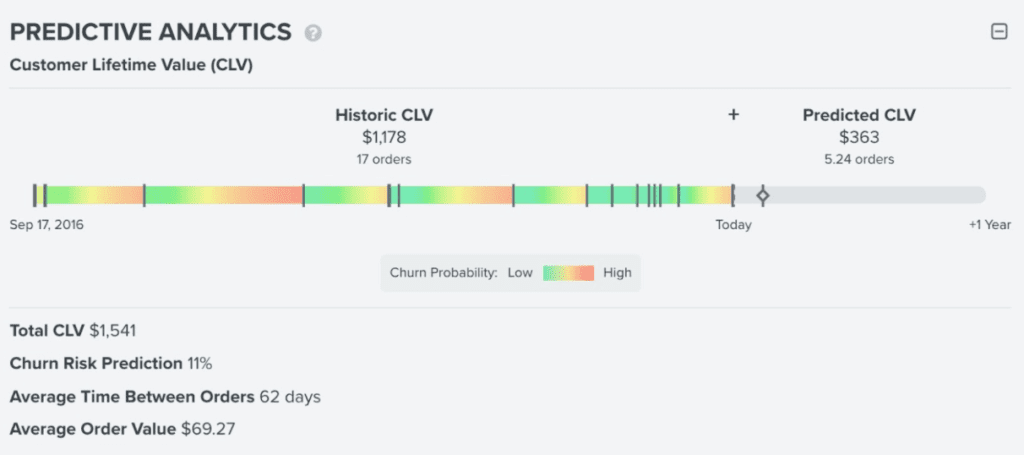
Klaviyo
Klaviyo’s predictive analysis is based on historic customer lifetime value, predicted customer lifetime value, total customer lifetime value, churn risk prediction, the average time between orders, and predicted gender.
By taking all of this information into account, Klaviyo can give businesses a clear picture of which customers are at high risk of churning and where they should focus their retention efforts. Furthermore, Klaviyo’s predictive analytics can also help businesses identify upselling and cross-selling opportunities.
By understanding which products or services are most likely to appeal to a particular customer, businesses can drive more sales and increase their overall profitability. In short, Klaviyo’s predictive analysis is a powerful tool that can help businesses better understand and serve their customers.
MailChimp
MailChimp’s predictive analytics can help online retailers increase revenue and return on investment. By predicting which customers are likely to purchase from your store again, you can create personalized campaigns that target these high-value customers.
Using MailChimp’s predictive analysis, online retailers can take their business to the next level. In addition, the predictive analysis can also identify which customers have a high lifetime value (CLV). This information can create further targeted marketing campaigns that aim to increase revenue from these customers.
The difference
Klaviyo’s predictive analytics is certainly a notch above Mailchimp’s. Klaviyo can take a wide range of data points into account, which allows it to give businesses a clear picture of their customers. This information can segment customers, create targeted campaigns, and increase sales.
MailChimp’s predictive analytics are also useful but are not as comprehensive as Klaviyo’s. The platform can only take into account customer purchase history when making predictions. As such, the predictions made by Mailchimp are not as accurate as those made by Klaviyo.
Support
Klaviyo

Klaviyo’s support team is available 24/7 and can be reached via email or phone. The support team is knowledgeable and always willing to help. Klaviyo’s support team is available Monday to Friday from 09:00am to 5:00pm ET. However, this is available only for paid users. Customers on the free plan can access their live chatbots that are available 24/7.
MailChimp
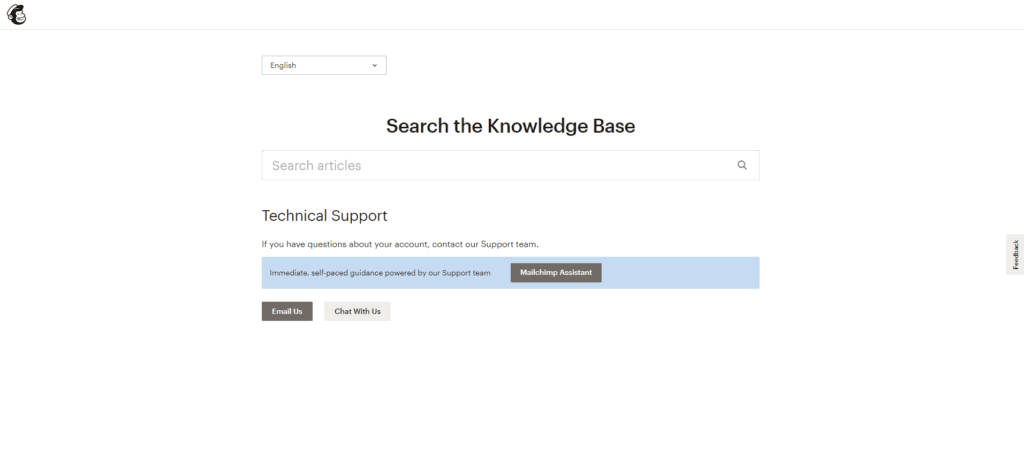
MailChimp’s support is excellent. They offer MailChimp Assistant, email support, 24/7 chat support, and weekday phone support 9 am-5 pm ET (only for premium). The MailChimp Assistant is a great tool that helps you troubleshoot and solve problems.
The 24/7 chat support is great for when you need help after hours. They offer various options for getting help, and their staff is always willing to help. Email support is also very helpful.
The difference
Not much difference here. Both platforms offer excellent support. Klaviyo offers 24/7 email and phone support for paid users, while Mailchimp offers more or less the same for its users.
Which ESP is right for your business?
For eCommerce brands – Klaviyo
Klaviyo is the clear winner for eCommerce brands. The platform’s predictive analytics and segmentation capabilities are second to none. Furthermore, Klaviyo’s support team is always available to help.
Klaviyo is a powerful ESP that is specifically designed for eCommerce businesses. It comes with all the features you need to drive sales and growth, including abandoned cart recovery, product recommendations, and order tracking.
What’s more, Klaviyo is easy to use and integrates seamlessly with all major eCommerce platforms. So if you’re looking for an ESP that will help you take your business to the next level, Klaviyo is a clear choice.
For local businesses – MailChimp
For businesses that are not eCommerce-focused, Mailchimp is a great option. The platform offers a wide range of features and has an excellent support team. In addition, Mailchimp is more affordable than Klaviyo.
While some email marketing providers can be quite expensive, MailChimp offers a free plan for businesses with less than 2,000 contacts. And even their paid plans are very reasonable.
One of the reasons small businesses sometimes shy away from email marketing is that it can seem daunting. But with MailChimp, even those without previous experience can create beautiful emails that get results. Their drag-and-drop editor makes adding images, text, and other elements easy, and their templates take the guesswork out of design.
MailChimp integrates with other tools. If you’re already using other marketing or sales tools, the chances are good that MailChimp will integrate seamlessly. This means less work for you in setting things up and maintaining multiple platforms.
Both platforms are great options for businesses, but it depends on your specific needs as to which one is right for you. We recommend trying out both platforms and seeing which one works best for your business if you’re not sure.
Purebred can help you optimize and improve your email marketing
Email marketing, when done correctly, can generate 5 to 7-figures per month for your eCommerce store. And deciding on the right ESP is the first step in that direction.
But what’s next? Where do you go from there?
If you don’t have the time, aren’t getting the results, or want to make email marketing an emphasis, you’ll need some help — that’s where we come in.
Purebred helps eCommerce brands just like yours take advantage of their most cost-effective and scalable marketing channel (email) to acquire and retain customers.
If you’re interested in learning more about Purebred and how we can help you grow your email (and SMS), click the link below, and we’ll be in touch.
Conclusion
Klaviyo is the better choice for businesses looking for a more powerful email marketing platform. The platform offers more features and customization options than MailChimp.
However, Klaviyo comes at a higher price tag. So if you’re on a budget, MailChimp may be a better choice for you. But if you’re willing to spend more to get the most out of your email marketing, Klaviyo is the better platform.
FAQ
Is Klaviyo or Mailchimp better?
It depends on your business needs. If you have a small business with a limited budget, Mailchimp may be a better option. However, if you have a larger budget and are looking for more features and customization options, Klaviyo may be a better choice. This is evident because more than 20,000 brands have shifted from MailChimp to Klaviyo as their needs grew.
Which Is Easier to Use? MailChimp or Klaviyo?
Klaviyo is generally easier to use than Mailchimp, although both platforms have a learning curve. Klaviyo’s interface is more user-friendly and intuitive, while Mailchimp’s interface is more basic.
Klaviyo vs. MailChimp: Which Offers Better Integrations?
MailChimp, with 289 integrations, is certainly ahead of Klaviyo, which offers integrations with 200 different apps. However, Klaviyo offers more e-commerce-specific integrations such as Shopify, BigCommerce, and Magento. On the other hand, MailChimp users have problems when integrating with Shopify.
This puts Klaviyo ahead of MailChimp for Shopify and e-commerce-based businesses. For Non-Shopify users, though, MailChimp is the clear winner.
MailChimp vs. Klaviyo: Which Offers the Better Customer Support?
Both Mailchimp and Klaviyo offer excellent customer support and provide round-the-clock assistance. However, MailChimp’s award-winning customer support is considered to be more responsive and helpful than Klaviyo’s.
Klaviyo vs. MailChimp: Which is the Better Value for Money?
MailChimp is a better value for small businesses with limited budgets. Klaviyo is a better value for larger businesses with more money to spend on email marketing.
